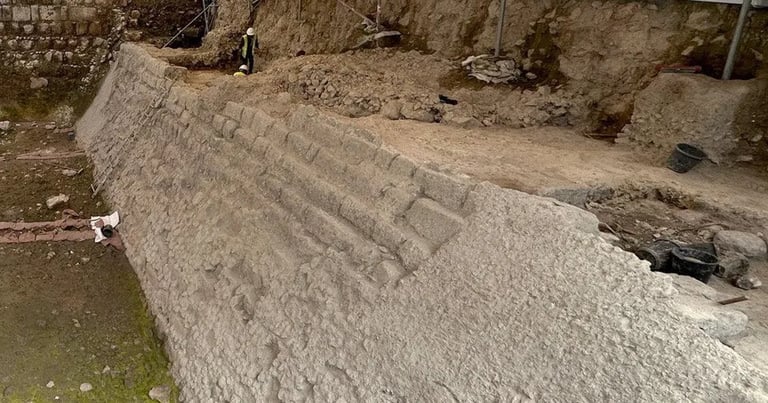2,800-Year-Old Dam Unearthed in Jerusalem Reveals Advanced Ancient Engineering
August 26, 2025
Carbon-14 dating places the dam’s construction in a narrow 10-year window at the end of the 9th century BCE, aligning with late 800s BCE activity.
The structure is exceptionally large for its time, measuring at least 19 meters in length and about 11 meters in height, with a width around 10 meters to withstand water pressure.
The dam is situated within the Siloam Pool complex, the city’s main water reserve at the lowest point, collecting rainwater and sourcing water from the Gihon Spring.
The dig at the contested City of David site in Silwan, conducted during 2023–2024 and funded by Elad, has sparked ongoing debates about early Jerusalem’s boundaries and infrastructure.
A 2,800-year-old dam from the First Temple period has been uncovered at the Pool of Siloam in Jerusalem’s City of David, underscoring a major engineering achievement of the era.
The hydraulic system included a tower that blocked the Gihon Spring and a large reservoir, funneling water to the Siloam Pool for storage and use.
The dam’s design reflects advanced engineering intended to prevent water leakage toward the Dead Sea, indicating a strategic move to secure water during climatic stress.
Experts say the dam stands as one of the largest and best-preserved water-control structures from the First Temple period.
The discovery connects to Judah’s kings addressing drought and climate stress, contributing to an early city-wide water infrastructure.
Findings, published in the Proceedings of the National Academy of Sciences and to be presented at a City of David conference, reinforce biblical links and suggest the dam supported expansion toward Mount Zion.
Archaeologists have fully unearthed a massive dam at the Siloam Pool site in Silwan, East Jerusalem, dating to the reigns of Kings Joash and Amaziah around 800 BCE.
The dam was part of a broader water system designed to protect Jerusalem’s water resources, channeling floodwater and spring water toward the Siloam Pool.
Summary based on 3 sources
Get a daily email with more Science stories
Sources

Haaretz • Aug 25, 2025
Biblical kings in Jerusalem may have built monumental dam to deal with climate change
ynetnews • Aug 27, 2025
2,800-year-old dam unearthed in Jerusalem stuns archaeologists
GreekReporter.com • Aug 26, 2025
Massive 2,800-Year-Old Dam Found at Biblical Pool of Siloam in Jerusalem - GreekReporter.com